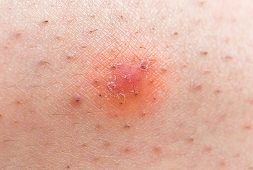
A meta-analysis of randomized controlled trials have unveiled promising findings regarding the efficacy of curcumin, the active component in turmeric, in enhancing mobility and reducing stiffness among individuals afflicted with osteopenia and osteoarthritis.
This revelation highlights the multifaceted therapeutic potential of curcumin, which has garnered attention for its purported benefits spanning a spectrum of health concerns, ranging from cancer to autoimmune disorders.
Despite its unassuming origins, curcumin has emerged as a formidable ally in the fight against age-related degeneration of bone tissue and joints. Its mechanism of action involves the stimulation of osteoblast formation and activity, coupled with the inhibition of osteoclasts, pivotal cells implicated in bone degeneration. This dual effect on bone tissue dynamics highlights curcumin’s nuanced impact on skeletal health.
While initial studies have yielded promising results regarding the bone-protective properties of curcumin, the literature has been characterized by a degree of inconsistency. In response to this ambiguity, a team of Iranian scientists, led by Mohammed Bideshki at Tabriz University of Medical Sciences, embarked on an umbrella analysis of meta-analyses of randomized controlled studies in order to get a clearer picture.
Their aim was to synthesize existing and offer clarity on the efficacy of curcumin supplementation in bolstering bone health.
More than half of older women suffer from osteopenia, while nearly 37% of U.S. adults grapple with osteoarthritis, highlighting the urgent need for easily accessible natural remedies to combat this widespread issue.
“The results strongly support curcuminoid supplementation in relieving pain, improving joint mobility and stiffness, and shortening medication usage of [osteoarthritis] patients,” the authors conclude.
Curcumin’s absorption into the body is hindered when consumed through food. Chris Kresser, MS, from the California Institute of Functional Medicine, recently addressed this issue, noting that supplement companies have long sought to develop a more bioavailable form of curcumin for gastrointestinal uptake.
One such formulation, NovaSol has demonstrated an impressive 185-fold increase in absorbability compared to curcumin obtained from food. Kresser, as a practicing clinician, recommends this formulation to his patients.
While caution is advised regarding high doses of curcumin, studies suggest that humans can tolerate up to 8 grams (8,000 mg) per day without adverse effects, surpassing typical commercial supplement levels.
While curcumin supplementation does not guarantee improved outcomes in osteopenia and osteoarthritis, its potent anti-inflammatory properties hold promise for alleviating associated pain.
The meta-analysis of randomized controlled trials highlights the potential of curcumin as a therapeutic agent in the management of osteopenia and osteoarthritis. By unraveling the complexities of curcumin’s impact on bone health, researchers strive to pave the way for accessible and effective interventions that offer relief to millions grappling with these debilitating conditions.



